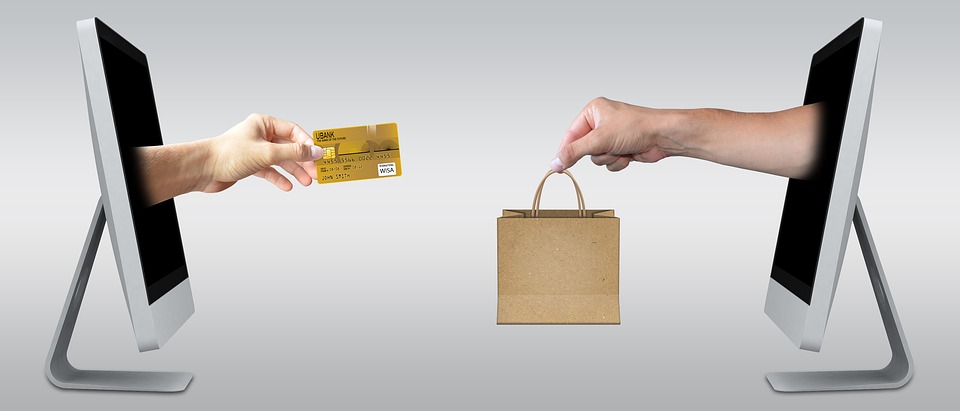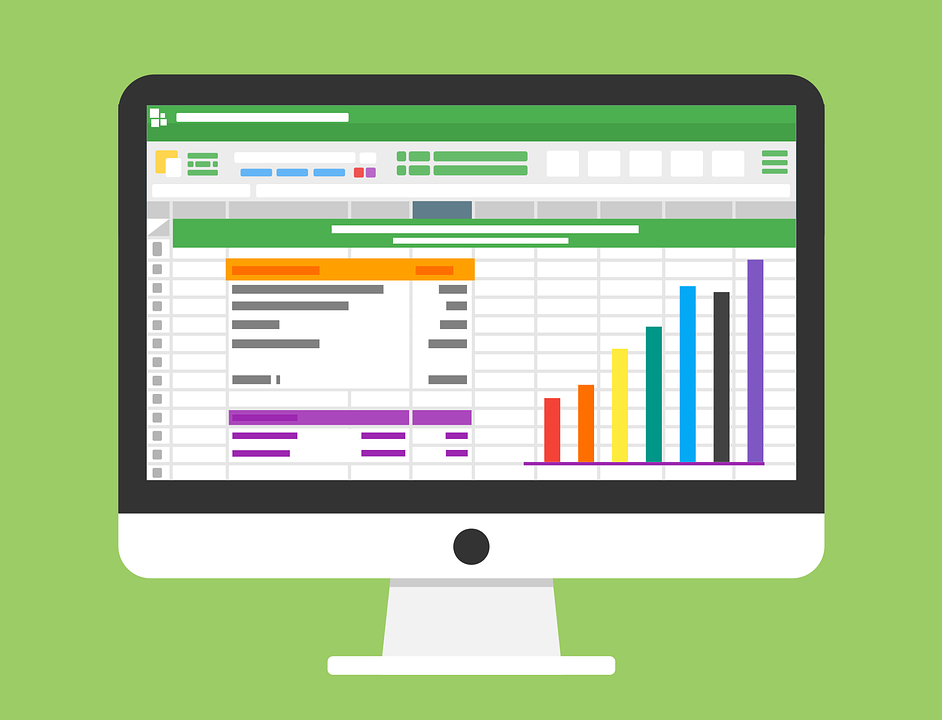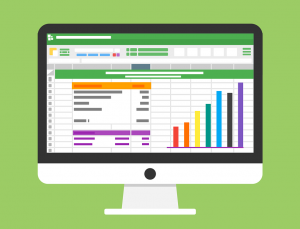
How to Record Cash Expenses in Quickbooks
 Most businesses use credit cards or debit cards to purchase products or services, but that doesn’t necessarily mean cash is obsolete. Some entrepreneurs and business owners still use cash to cover their expenses. It’s accepted by all or most vendors, making it a convenient form of payment. Unlike credit cards and debit cards, however, cash purchases don’t leave a paper trail. Therefore, keeping track of them can be difficult. As a business owner, you should record cash expenses in your Quickbooks account by following the steps listed below.
Most businesses use credit cards or debit cards to purchase products or services, but that doesn’t necessarily mean cash is obsolete. Some entrepreneurs and business owners still use cash to cover their expenses. It’s accepted by all or most vendors, making it a convenient form of payment. Unlike credit cards and debit cards, however, cash purchases don’t leave a paper trail. Therefore, keeping track of them can be difficult. As a business owner, you should record cash expenses in your Quickbooks account by following the steps listed below.
To record a cash expense in Quickbooks, fire up your accounting software and click the (+) sign at the top of the page, followed by “Expense” under the “Suppliers” menu. From here, you’ll be able to choose the vendor to whom the payment was made. Simply click the drop-down menu for “Payee” and scroll through the list until you find the appropriate vendor, after which you can click it the vendor’s name. You’ll also need to choose an account for the expense, such as a cash account.
After choosing the payee and the account type, enter the date on which you made the cash payment. If you can’t remember, go back and look at your receipts. It’s important that you enter the correct date for tax purposes, as erroneous payment dates may flag an audit. And if you can’t find a receipt, consider calling or contacting the vendor to see if they have a record of the transaction. With a little investigative work, you should be able to identify the date on which you made the cash payment.
There are still a few other steps left to record a cash expense. For example, you’ll need to select “Cash” in Quickbooks as the payment method. You’ll also need to select an expense category in the Account drop-down menu. Furthermore, Quickbooks requires users to enter a description and dollar amount for the purchase. And finally, if you paid sales tax on the cash purchase, you’ll need to enter in the “Sales tax” field. Once you’ve completed these steps, you can click “Save” to complete the process.
Recording cash expenses in Quickbooks isn’t much different than recording credit card or debit card expenses. The only real difference is that you’ll need to choose “cash” as the payment method. Refer to the steps listed here if you can’t remember how to record cash expenses in Quickbooks.
Did this tutorial work for you? Let us know in the comments section below!

How to Email Invoices to Customers Using Quickbooks
 If you allow customers to pay after their product or service has been delivered, you probably use invoices to bill them (or you should, at least). While you can always send invoices to customers via direct mail, email is a better option for several reasons. First, emails are delivered instantly, meaning customers receive them within seconds of clicking the “send” button. Second, you can measure key performance analytics of your emails like click-through rates (CTRs) and open rates. But if you plan to email invoices to your business’s customers, you’ll need to configure your Quickbooks Desktop accounting software.
If you allow customers to pay after their product or service has been delivered, you probably use invoices to bill them (or you should, at least). While you can always send invoices to customers via direct mail, email is a better option for several reasons. First, emails are delivered instantly, meaning customers receive them within seconds of clicking the “send” button. Second, you can measure key performance analytics of your emails like click-through rates (CTRs) and open rates. But if you plan to email invoices to your business’s customers, you’ll need to configure your Quickbooks Desktop accounting software.
There are several ways to email invoices using Quickbooks, one of which is involves the software’s Secure Webmail service. It’s become the default standard email service for Quickbooks Desktop, as it’s safer, more secure and easier to use than previous methods. Furthermore, Secure Webmail automatically connects your Intuit account to your email account, thereby eliminating the need to reenter your password each time you send an email.
To set up Secure Mail, log in to your Quickbooks Desktop accounting software and click the “Edit” menu at the top of the screen, followed by Preferences > Send Forms. Next, choose ” Web Mail,” followed by “Add.” You will then a drop-down menu containing a list of common email service providers. Click this menu and choose your business’s preferred email service provider from the list, after which you can enter your email address. You’ll want to make sure the button for “Use Enhanced Security” is checked, as this provides an additional layer of security to your emails. Once checked, click “OK” to proceed.
Quickbooks will then prompt you to sign in to your Intuit account. Enter the username and password associated with your Intuit account (not necessarily your Quickbooks account). Congratulations, you’ve just set up email in Quickbooks! You can now email invoices and other forms to customers or vendors.
Keep in mind, however, that Secure Webmail isn’t available in all versions of Quickbooks. The service is only found in newer versions of Quickbooks Desktop, including Quickbooks 2017 R4, Quickbooks 2017 R5 and Quickbooks 2018. Also, Secure Webmail is just one way to send emails using Quickbooks. You can also use Microsoft Outlook as well as regular webmail. However, neither of these options offer the same level of security as Secure Webmail. Therefore, it’s recommended that you stick with Secure Webmail is possible.
Did this tutorial work for you? Let us know in the comments section below!

What Are Account Detail Types in Quickbooks?
 If you’re planning to keep track of your business’s financial records using Quickbooks, you’ll need to familiarize yourself with the accounting software’s detail types. Whenever you create an account in Quickbooks — expense account, income account, liability account, etc. — you’ll be prompted to choose a detail type. It’s important that you choose the right detail type because this will affect the subcategory in which the account is placed.
If you’re planning to keep track of your business’s financial records using Quickbooks, you’ll need to familiarize yourself with the accounting software’s detail types. Whenever you create an account in Quickbooks — expense account, income account, liability account, etc. — you’ll be prompted to choose a detail type. It’s important that you choose the right detail type because this will affect the subcategory in which the account is placed.
How to View Detail Types for an Account
You can view the detail types for an account that you’ve already created in Quickbooks by logging in to your account and clicking the gear icon at the top of the page. Next, look under “Settings” and click “Chart of Accounts.” From here, click “New” in the upper-right corner, at which point you should see a popup window appear on the page. In this window, click the “Account Type” for the respective account. You should then be able to see the account type in this window. If it’s not available, go back and repeat the steps previously mentioned. Keep in mind, however, that these steps are designed to work with Quickbooks Online. If you use Quickbooks Desktop — the desktop version of Intuit’s business accounting software — you’ll have to follow a different process to view detail types.
How to Change Account Type
But what if you want to change the account type for one or more accounts in Quickbooks? Thankfully, this is a quick and easy process. To change the account type, log in to your Quickbooks account and click the gear icon at the top of the main page, followed by “Chart of Accounts.” From here, you should see a drop-down menu next to the account, which you can click to edit. You can then choose a new account type in the popup window, followed by clicking “Save and Close.” Quickbooks will prompt you to confirm the change by warning that changing account type can affect your business’s financial records. Assuming you’re comfortable with the changes, click “Yes” to confirm the process and complete the account type change. Quickbooks will now recognize the account as the newly specified type.
You can avoid the headache of changing account types by selecting the right type initially when creating new accounts. If you need to go back and change an account type, though, refer to the steps listed here.
Have anything else that you’d like to add? Let us know in the comments section below!

Need to Return a Product to a Supplier? Here’s How to Record It
 As a business owner, you’ll probably find yourself purchasing products and services from suppliers. After all, you have to spend money to make money. Regardless of the industry in which your business operates, you’ll need to purchase products and services to facilitate your operations. Normally, you can record the cost of these purchases as business-related expenses. But what if you need to return a product to the supplier? When you return a product, you’ll need to record it differently so that it’s not counted as an expense. Otherwise, your business’s accounting records will be thrown off. If you use the Quickbooks accounting software, you can follow the steps listed below to handle returns such as this.
As a business owner, you’ll probably find yourself purchasing products and services from suppliers. After all, you have to spend money to make money. Regardless of the industry in which your business operates, you’ll need to purchase products and services to facilitate your operations. Normally, you can record the cost of these purchases as business-related expenses. But what if you need to return a product to the supplier? When you return a product, you’ll need to record it differently so that it’s not counted as an expense. Otherwise, your business’s accounting records will be thrown off. If you use the Quickbooks accounting software, you can follow the steps listed below to handle returns such as this.
The correct way to record a returned product is to create a supplier credit. This involves logging in to your Quickbooks account, clicking the (+) icon at the top of the screen and choosing “Bank Deposit.” From here, you’ll need to complete the displayed fields. In the “Received from” field, scroll through the list of suppliers and select the one to whom you returned the product. In the “Account” field, choose “Accounts Payable.” In the “Amount” field, enter the payment amount associated with the returned product. After double checking these entries to ensure they are correct, click “Save and close.”
After creating a supplier credit, you’ll need to go back and link the original deposit to it. To do this, go back to to the main screen of your Quickbooks account, click the (+) icon again and choose “Expense” or “Check.” It’s important to note that both of these options can be used to record expenses. However, when you choose “Check,” the transaction creates a check that you can print. Next, you’ll see a drop-down menu from which you can select the supplier to whom you are returning the product. Choose the supplier’s name and leave the fields for “Reference,” “Check #,” “Date,” “Amount” and “Memo” blank. Finally, click “Add” in the “Add to Expense” section, and then choose the amount of credit that you want to issue to the supplier. When finished, click “Save and close” to complete the process.
It’s not uncommon for businesses to return products to a supplier. Maybe you accidentally ordered the wrong product, or perhaps the product was damaged when it arrived. Regardless, you should record returned products in your Quickbooks account using the steps mentioned here.
Did this tutorial work for you? Let us know in the comments section below!

How to Record Donations Your Business Receives in Quickbooks
 Has your business received a donation? It’s not uncommon for businesses to receive donations. Even if your business isn’t classified as a nonprofit organization (NPO), it can still receive donations. Because this money isn’t generated from your business’s normal operations, however, it’s important that you record them properly in your financial records. Using Quickbooks, you can easily record donations that your business receives.
Has your business received a donation? It’s not uncommon for businesses to receive donations. Even if your business isn’t classified as a nonprofit organization (NPO), it can still receive donations. Because this money isn’t generated from your business’s normal operations, however, it’s important that you record them properly in your financial records. Using Quickbooks, you can easily record donations that your business receives.
To record a donation, log in to your Quickbooks Online account — the cloud-based version of Intuit’s accounting software — and click the gear icon at the top of the screen, followed by “Custom Form Styles.” From here, click “New style” to create a new form, followed by “Content.” Next, click the pencil icon at the top of the menu, followed by “Form names.” You can then modify the name of the form, whether it’s an invoice estimate or receipt.
It’s important to note that the aforementioned steps only apply to donations that your business receives. If your business donates money to another company or entity, you’ll need to record that transaction differently. To record donations made by your business, log in to Quickbooks and click the gear icon at the top of the screen, followed by “Chart of Accounts.” Next, click New > Category Type > Expenses > Detail Type > Charitable Contributions. You will then be asked to enter a name for the donation, such as “donation to company A.” When finished, click “Save and close” to complete the process.
You’ll also need to create a product item for this donation. This is done by clicking the gear icon, followed by “Products and Services.” Next, click “New” and choose the type of product. You can then enter a name for the donation. Most importantly, make sure the “I sell this product or service” field contains a check mark. If it doesn’t click the box next to this field so that it places a check mark inside it. In the “Income account” field, choose the “Charitable Constructions” account that you recently created. When finished, click “Save and close.”
Recording donations is essential to keeping your business’s financial records in working order. Whether you make a donation to another business or receive a donation from a customer or client, you should record those transactions in your accounting software. You can refer to this blog post for more insight on how to record donations using Quickbooks.
Did this tutorial work for you? Let us know in the comments section below!

How to Edit a Journal Entry in Quickbooks
 Creating journal entries is an important step to using the Quickbooks software. When you create a journal entry, you are essentially creating a memo for accounting purposes. You can use journal entries to easily record transactions so that aren’t accidentally overlooked by your business. But if you’re thinking about using in your accounting practices, you’ll need to follow a few basic steps. In this post, we’re going to break down the steps to using journal entries in Quickbooks, revealing where this feature is located as well as how to edit an existing journal entry.
Creating journal entries is an important step to using the Quickbooks software. When you create a journal entry, you are essentially creating a memo for accounting purposes. You can use journal entries to easily record transactions so that aren’t accidentally overlooked by your business. But if you’re thinking about using in your accounting practices, you’ll need to follow a few basic steps. In this post, we’re going to break down the steps to using journal entries in Quickbooks, revealing where this feature is located as well as how to edit an existing journal entry.
To create a journal entry in Quickbooks Online — the cloud-based version of Intuit’s popular accounting software — log in to the software and click the magnifying glass icon at the top of the screen. Next, click “Advanced Search” under the field titled “Search Transactions.” As the name suggests, this will allow you to perform an advanced search of your account. For this purpose, though, you should use it to search for the journal entry that you want to edit.
In the “Search” field, click the drop-down menu and choose “Journal Entries.” You will then have the option to filter certain journal entries from the results. It’s recommended that you edit the filters so that you can easily find the journal entry you want to edit. Assuming you only have a handful of journal entries, finding it shouldn’t be a problem. But if you have dozens or hundreds of journal entries, you may need to use the filter search option to narrow down the results.
After setting the filters, choose “Search,” followed by “Date Filter.” You can then select a date range for the journal entries, after which you can click “Apply.” Quickbooks will then reveal all journal entries that meet your specified criteria, including the date range. When you see the journal entry that you’d like to edit, click to edit it. After editing the journal entry, choose “Save and close” to complete the process. Sorry if you were expecting more, but that’s all it takes to edit a journal entry in Quickbooks!
It’s important to note that journal entries in accounting typically consist of records of a transaction and its respective debit or credit. While Quickbooks journal entries can also contain this information, they are used primary for creating references of financial transactions.
Did this tutorial work for you? Let us know in the comments section below!

How to Record a Credit Memo in Quickbooks
 When you give a customer credit, it’s important that you record that credit on your business’s books. Assuming you use the Quickbooks accounting software, you can easily record this exchange using a credit memo. Intuit’s popular accounting software makes recording customer credits quick and painless. For a step-by-step walkthrough on how to record credit memos in Quickbooks, keep reading.
When you give a customer credit, it’s important that you record that credit on your business’s books. Assuming you use the Quickbooks accounting software, you can easily record this exchange using a credit memo. Intuit’s popular accounting software makes recording customer credits quick and painless. For a step-by-step walkthrough on how to record credit memos in Quickbooks, keep reading.
First, log in to your Quickbooks account and click the (+) menu at the top of the page. Next, choose “Credit Memo” under the “Customers” column. From here, click the drop-down menu and find the customer to whom you want to issue the credit. Once you’ve found the customer’s name, click it to proceed. You’ll then need to choose a product or service associated with the credit. Under the column titled “Product/Service,” click the drop-down menu, after which you’ll see a list of all applicable products and services. Find the product or service associated with the credit and click it.
Next, take a look at the column titled “Amount” to ensure that it accurately reflects the amount of credit you want to give the customer. By default, this amount is set as the sale price of the respective product or service. You can change it, however, by modifying the “Amount” field on the right-hand side of the screen. If you only want to give the customer a 50% credit, for example, you can divide this total in half to calculate the appropriate credit amount. Regardless, make sure the “Amount” field reflects the actual amount of credit that you want to give the customer.
After choosing the customer and ensuring the “Amount” field is correct, you can save the changes to complete the process. Quickbooks offers one of two saving options: Save and Close or Save and Send. The former saves your work and closing the Quickbooks software, whereas the latter saves your work and sends the finished credit memo to the customer. If the customer hasn’t received the credit yet — which he or she probably hasn’t — choose “Save and Send.”
Not all businesses give customers credit. In fact, most businesses will probably never encounter a scenario in which they need to issue an credit. But if your business ever gives a customer credit — whether it’s for a return, defective product, poor service, etc. — you should record it in your Quickbooks account by following these steps.
Did this tutorial work for you? Let us know in the comments section below!

Tips for Creating a Portable File in Quickbooks
 It’s not uncommon for business owners to create backups of their Quickbooks data in a portable file format. Normally, company files are used for storing and saving information. Portable files, however, are different in the sense that they only include essential information. Unlike company files, portable files contain contain letters, images, templates and logos. Therefore, they are smaller and more compact than company files, hence the name “portable file.”
It’s not uncommon for business owners to create backups of their Quickbooks data in a portable file format. Normally, company files are used for storing and saving information. Portable files, however, are different in the sense that they only include essential information. Unlike company files, portable files contain contain letters, images, templates and logos. Therefore, they are smaller and more compact than company files, hence the name “portable file.”
Only Use if Company File Is Too Large
You really don’t need to use a portable file unless your company file is too large. Assuming you run a small business and process only a few dozen transactions per week, a company file should suffice for your Quickbooks accounting needs. On the other hand, if your business is large and processes hundreds or thousands of transactions per week, creating a portable company file might be recommended. You can use a portable file to quickly share data with colleagues via email or instant messenger.
Make Sure Quickbooks Is Up to Date
It’s always a good idea to check and make sure your Quickbooks software is up to date before restoring a company file. Quickbooks supports two options for updates :automatic or manual. With automatic updates, the software will automatically update whenever a new version is released. With manual updates, you must manually log in to Quickbooks to update the software whenever a new version is released. The former is recommended since it simplifies and automates the otherwise tedious process of checking for new releases.
Create Portable Files
You can easily create portable files in Quickbooks by logging in to your account and clicking the “File” button, followed by “Create Copy.” Next, click “Portable company file,” followed by “Next.” You can then choose the location where you’d like to save the portable file, such as your computer’s hard drive, a USB flash drive, the cloud, etc. Once you’ve selected a save-to location, click “Save” and then “OK.”
Copy to Desktop If You Can’t Restore
If you’re unable to restore a portable file, try copying and saving it to your desktop first. This is done by accessing the portable file in its original location and right-clicking, followed by selecting “Copy.” Next, right-click and choose “Paste” on your desktop to save it here. You can then reattempt to open the portable file from Quickbooks.
Did this tutorial work for you? Let us know in the comments section below!

Creating Sales Receipts in Quickbooks: What You Should Know
 Creating sales receipts is an important step in running a business. When a customer buys a product or service from your business, you must provide him or her with a sales receipt. This shows the customer the amount of money he or she paid as well as their method of payment (e.g. cash or credit card). While there are dozens of tools available that can help you create receipts for your business, one of the most effective is Quickbooks. Intuit’s popular accounting software allows you to quickly and easily create sales receipts. So, if you’re looking to create sales receipts for your business, consider using Quickbooks.
Creating sales receipts is an important step in running a business. When a customer buys a product or service from your business, you must provide him or her with a sales receipt. This shows the customer the amount of money he or she paid as well as their method of payment (e.g. cash or credit card). While there are dozens of tools available that can help you create receipts for your business, one of the most effective is Quickbooks. Intuit’s popular accounting software allows you to quickly and easily create sales receipts. So, if you’re looking to create sales receipts for your business, consider using Quickbooks.
To create sales receipts in Quickbooks, fire up the program and click the (+) menu at the top of the screen. From here, select “Customers” and “Sales Receipt.” You will then a see a new screen with details about the sales receipt. This is where you’ll need to choose the customer who’s paying for the goods or services sold by your business. Assuming you’ve recorded transactions from this customer in the past, you can select his or her from the drop-down menu in the upper-left corner. If you haven’t recorded transactions from the customer, however, you’ll need to add him or her as a new customer. This is done by clicking the “Add new” button below the drop-down menu, after which you can enter the customer’s name or use an identification name.
After selecting the customer, you’ll need to enter the goods or services purchased by the customer. If it’s a new product or service, type it into the field and click “Add new.” Next, complete the requested information about the product or service, such as the sale price and date.
There are a few other steps to creating sales receipts. For instance, you’ll need to create an income account by choosing Product or Service Information > Income Account. Keep in mind that this isn’t a bank or financial account. Rather, it’s simply an account used for storing your business’s transactions.
Once you’ve created an income account, you’ll need to enter the customer’s payment method. Available options include check, cash, Discover, Mastercard, Visa, etc. Next, choose the bank account in which you deposited the customer’s payment in the “Deposit To” field. Finally, you can print the sales receipt by clicking Customers > Sales Receipt > Print or Preview.
Did this tutorial work for you? Let us know in the comments section below!

What’s the Difference Between Credit Memo, Delayed Credit and Customer Refund?
 When keeping track of your business’s finances using Quickbooks, you’ll probably come across the terms “credit memo,” “delayed credit” and “customer refund.” Based on the name alone, you may assume that they all refer to the process of refunding a customer. If a customer overpaid or returned his or her purchased item, for example, you might use these options to refund the customer. Although they all have a similar purpose, however, they are each designed for a specific function. To learn more about the differences between credit memo, delayed credit and customer refund in Quickbooks, keep reading.
When keeping track of your business’s finances using Quickbooks, you’ll probably come across the terms “credit memo,” “delayed credit” and “customer refund.” Based on the name alone, you may assume that they all refer to the process of refunding a customer. If a customer overpaid or returned his or her purchased item, for example, you might use these options to refund the customer. Although they all have a similar purpose, however, they are each designed for a specific function. To learn more about the differences between credit memo, delayed credit and customer refund in Quickbooks, keep reading.
Credit Memo
In Quickbooks, a credit memo is a transaction that you can apply to a customer’s invoice as a payment. When a customer makes a payment, you can create a credit memo for the respective invoice showing that he or she paid it.
Delayed Credit
Delayed credit, on the other hand, is a transaction you create in Quickbooks that isn’t applied to the customer’s invoice until a future date. You can add it it the customer’s invoice as a line item, specifying the date on which you want the credit to be published. So, what’s the purpose of delayed credit? Delayed credit is used when a customer pays for a product or service before the actual due date. Many businesses simply publish the credit at the time the customer makes the payment, and this usually has no ill effect on their books. Some businesses, however, prefer to wait until a specific date to publish payments made by customers for the associated fiscal period. For these businesses, using a delayed credit is recommended.
Refund
Finally, a refund is exactly what it sounds like: a transaction in which money from a customer’s payment is refunded back to the customer. It’s not uncommon for customers to request a refund after buying a product or service. If a customer received the wrong size shirt from an apparel store, for example, he or she may request a refund. Refunds are also given to customers if the purchased product or service didn’t live up to the customer’s expectations. In Quickbooks Online, you can create a refund by logging in to your account and clicking the (+) button, followed by “Refund Receipt.” From here, you can select the product or service associated with the transaction as well as the amount that you want to refund the customer.
Did this tutorial work for you? Let us know in the comments section below!
